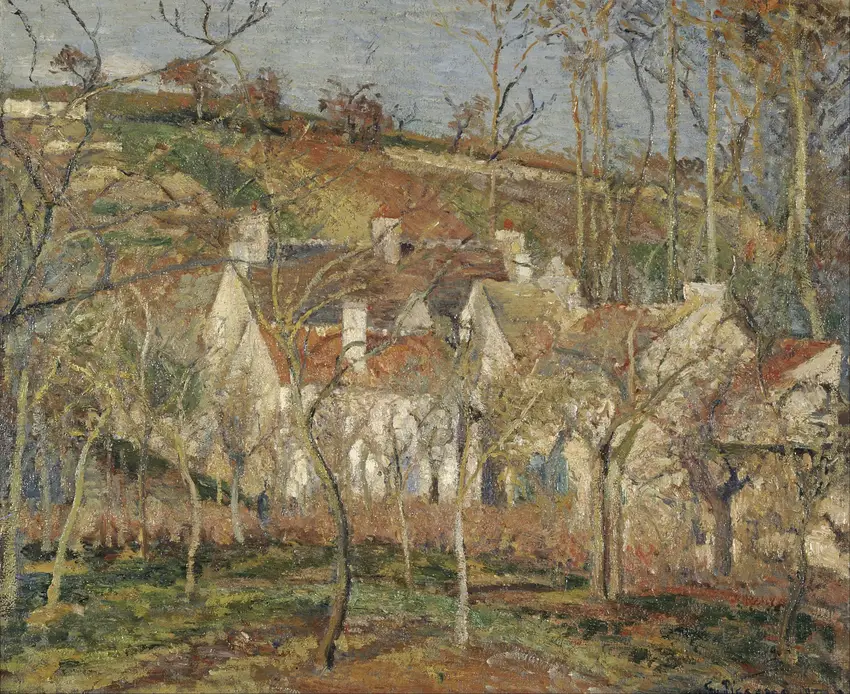-
-full.webp)
La Charité (1876)
A woman bends over a child, her hand outstretched with coins. The soft brushstrokes blur their faces, but the gesture lingers—quiet, urgent. Poverty and compassion meet in this muted street scene.
-
-full.webp)
Still Life with Apples and Pitcher (1872)
Sunlight glows through ripe apples clustered beside a simple pitcher. Brushstrokes blur the line between fruit and vessel, their forms dissolving into dappled color. The ordinary becomes luminous—weightless yet solid, fleeting yet enduring.
-
-full.webp)
Jardin et poulailler chez Octave Mirbeau, Les Damps (1892)
Sunlight dapples the garden path, weaving through leaves to settle on the chicken coop. Brushstrokes blur the line between earth and sky, turning a quiet corner of the countryside into something alive. The scene hums with ordinary magic—feathers, foliage, and the warm hush of midday.
-
-full.webp)
Petite gardeuse d’oies (1886)
A girl stands barefoot in the grass, her small frame dwarfed by the geese she tends. Sunlight dapples the scene, softening the edges of her straw hat and the birds’ white feathers. The air hums with quiet movement—rustling wings, shifting feet, the unspoken bond between child and flock.
-
-full.webp)
Chemin de l’écluse, Saint-Ouen-l’Aumône (1882)
A sunlit path winds past a quiet riverbank, where dappled light dances on the water. Trees lean gently over the lane, their leaves whispering in the breeze. The scene hums with the quiet rhythm of rural life—soft, fleeting, alive.
-
-full.webp)
Self Portrait (1896)
A bearded face emerges from loose brushstrokes, eyes steady beneath a hat’s shadow. Warm tones blend into the background, dissolving edges between figure and air. The gaze holds quiet intensity, neither confronting nor retreating—just present.
-
-full.webp)
Bords Du Loing À Moret (1901)
A tranquil riverside scene alive with light and movement, where brushstrokes dissolve into the shimmer of water and wind.
-

Red roofs, corner of a village, winter
A snowy village scene where red rooftops glow against winter’s muted tones, capturing quiet rural life with warmth and texture.
-
-full.webp)
The Gardener – Old Peasant with Cabbage (1883-1895)
An elderly peasant holds a cabbage with quiet pride, his connection to the land rendered in earthy, textured brushstrokes.